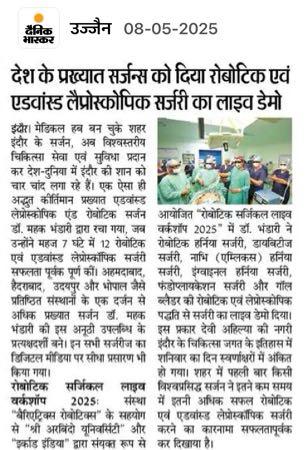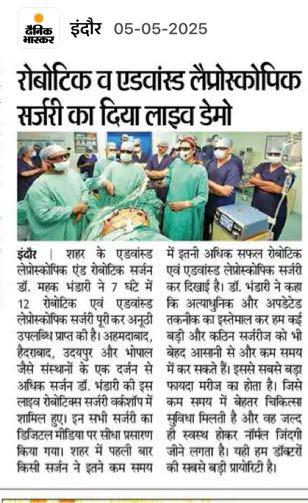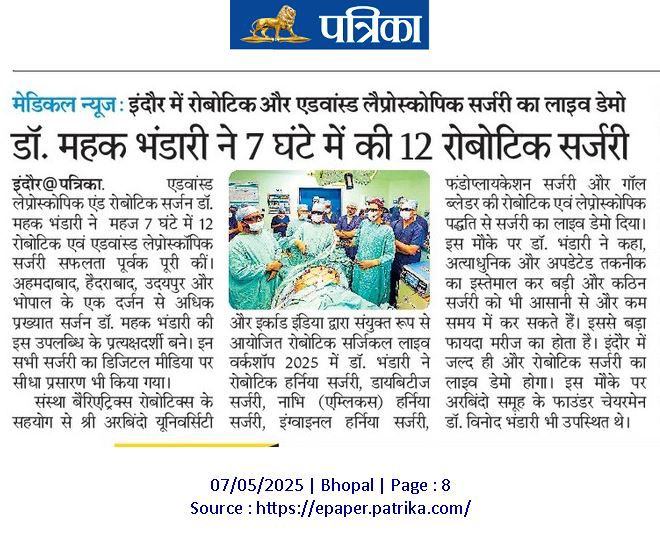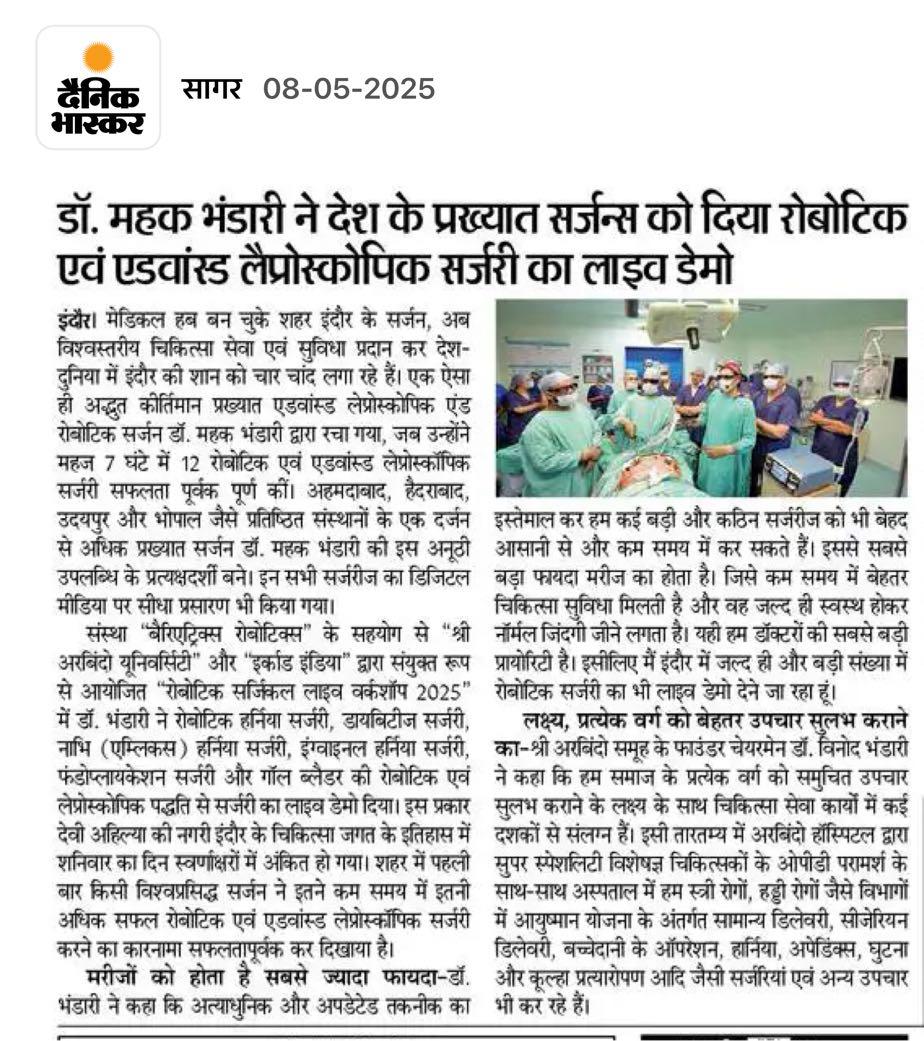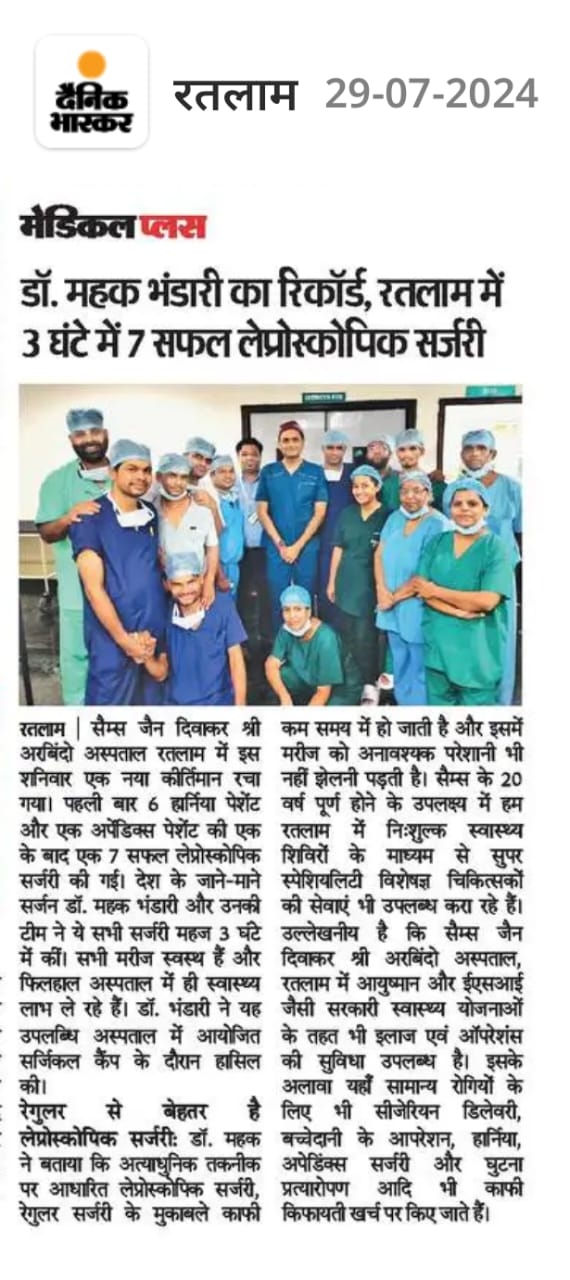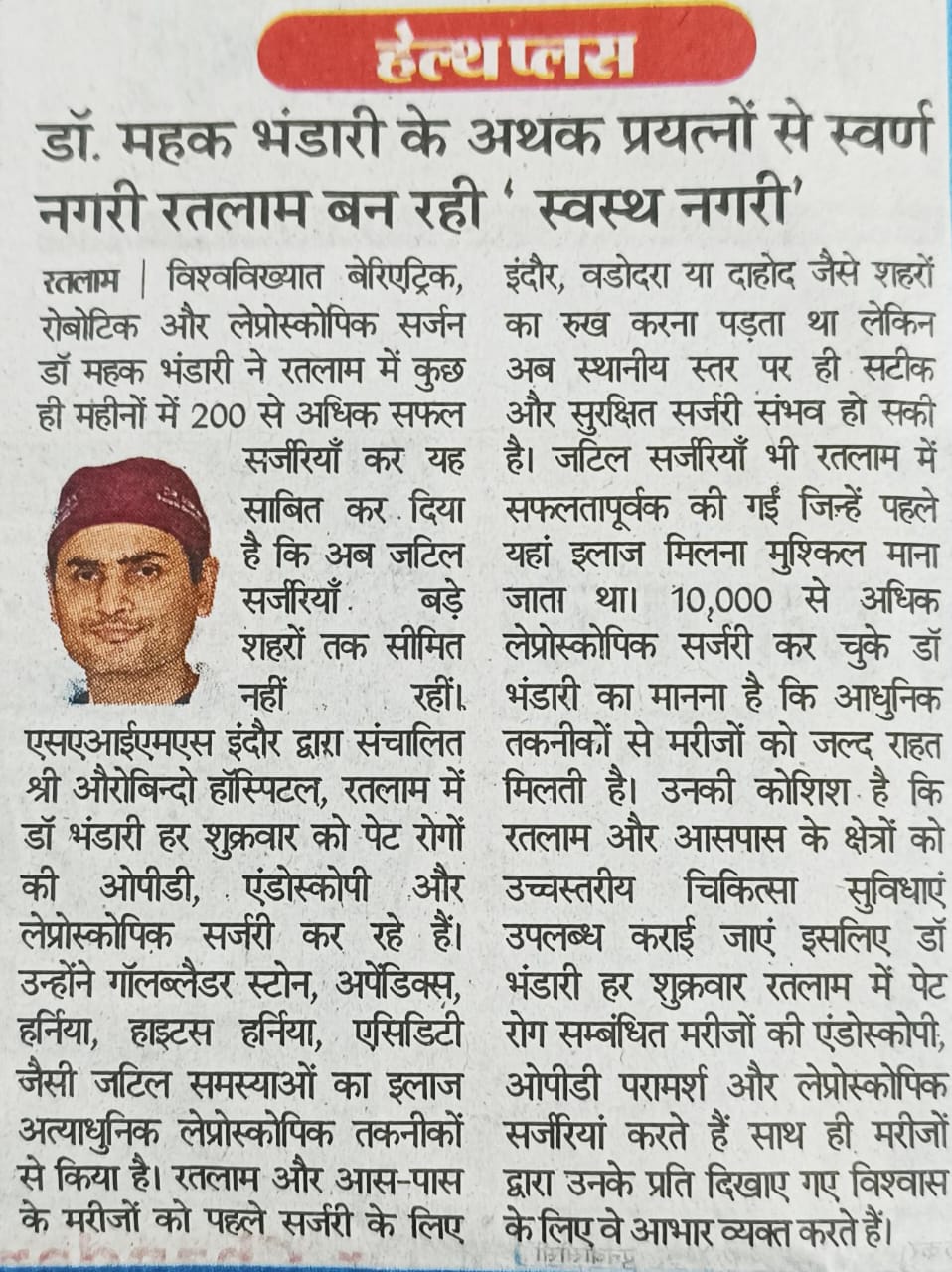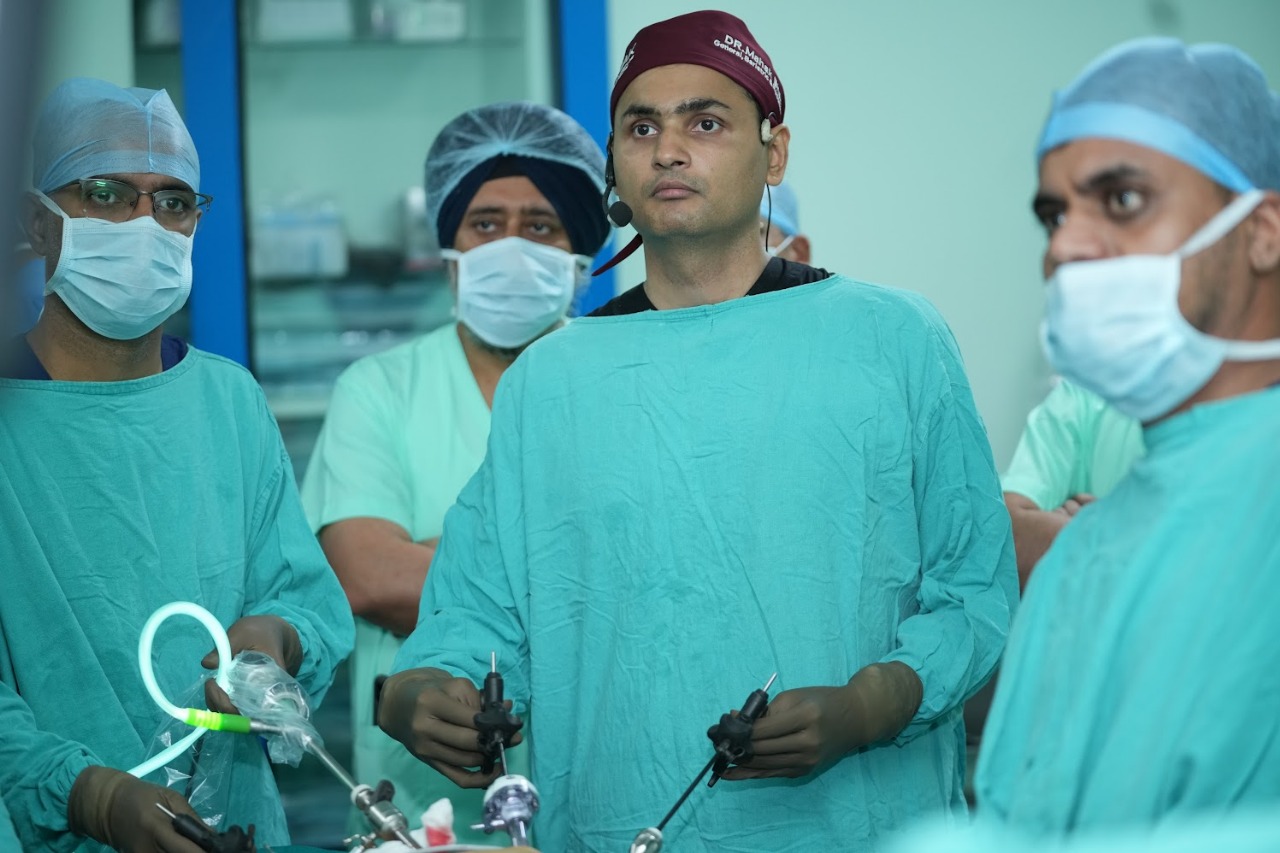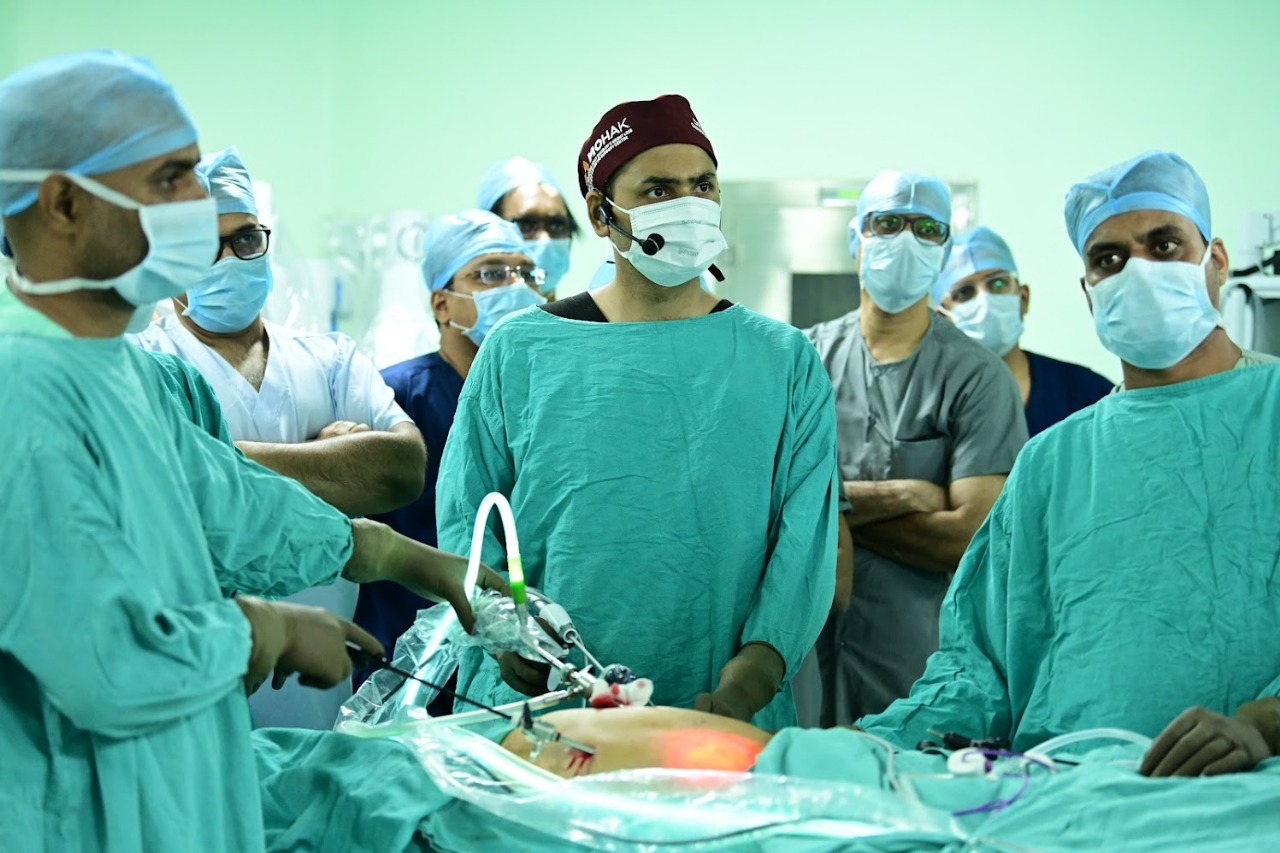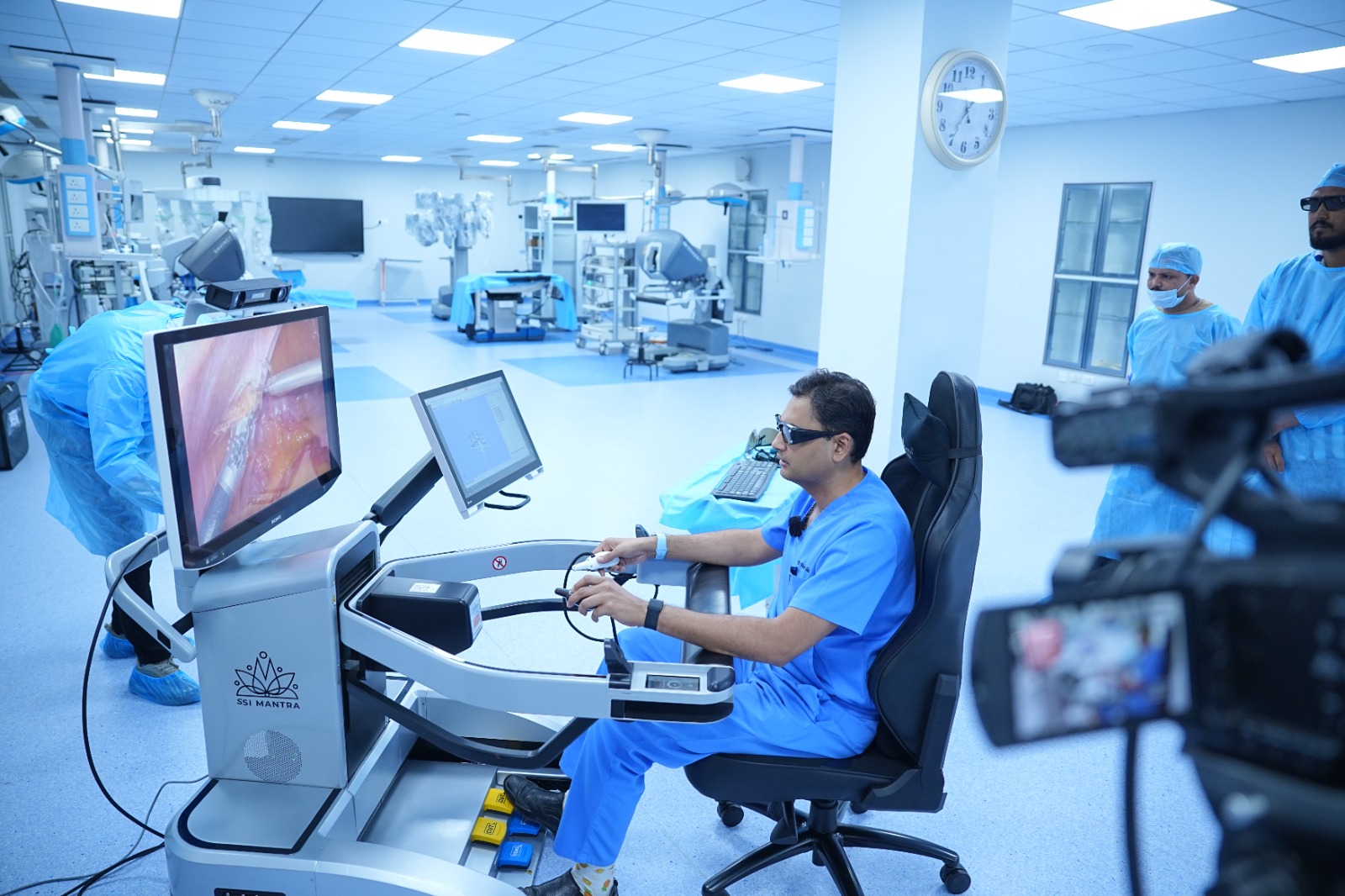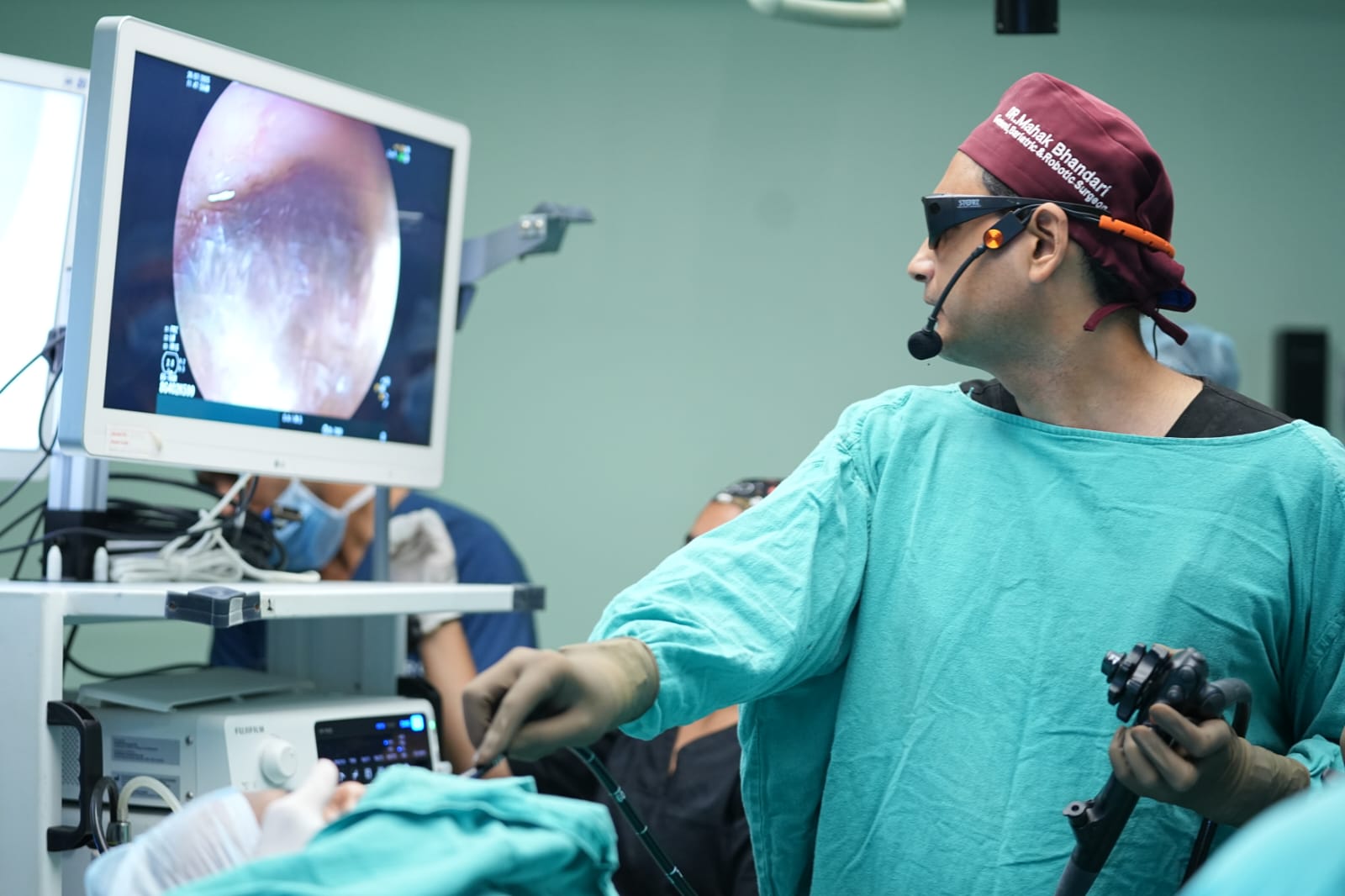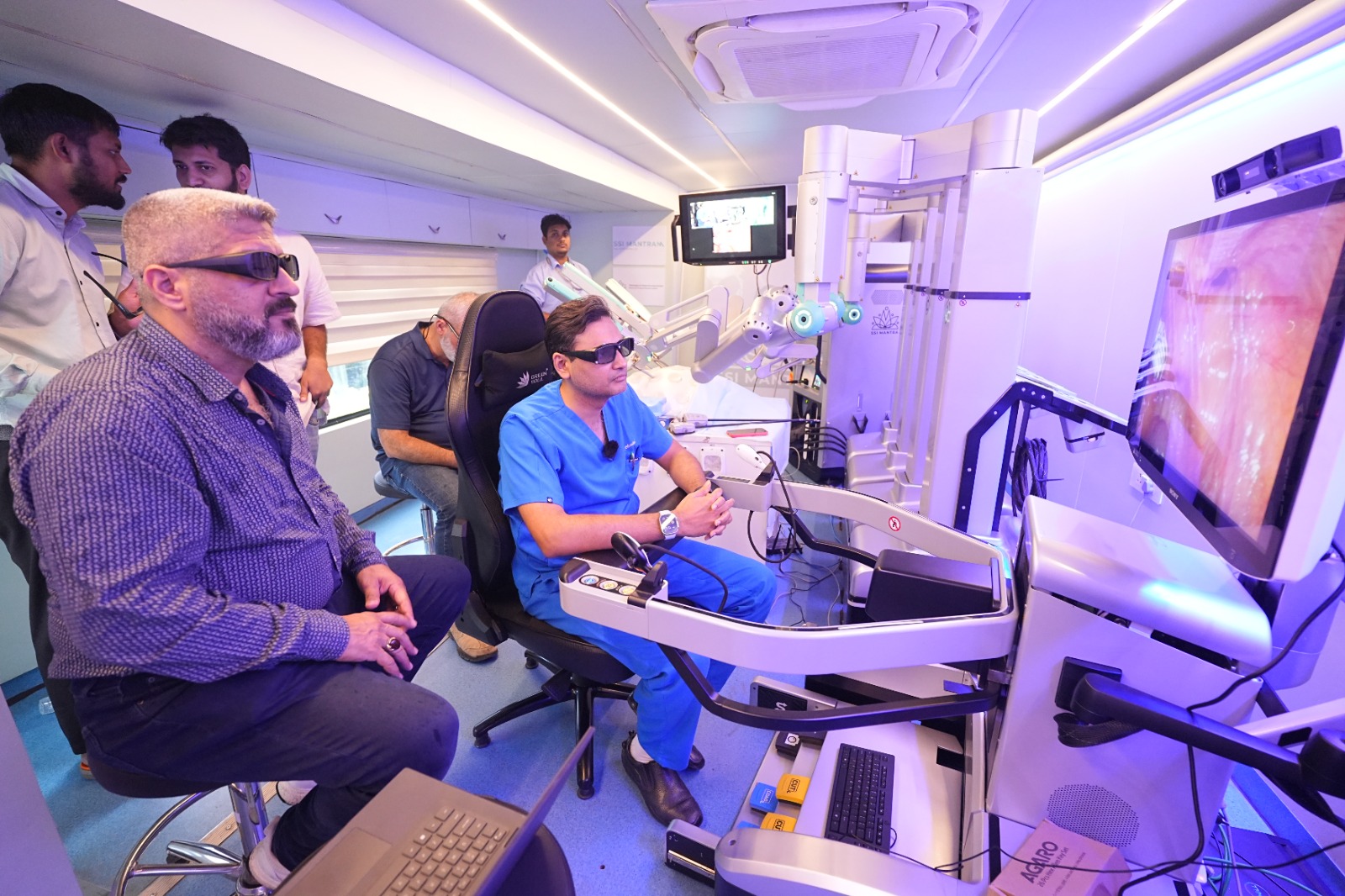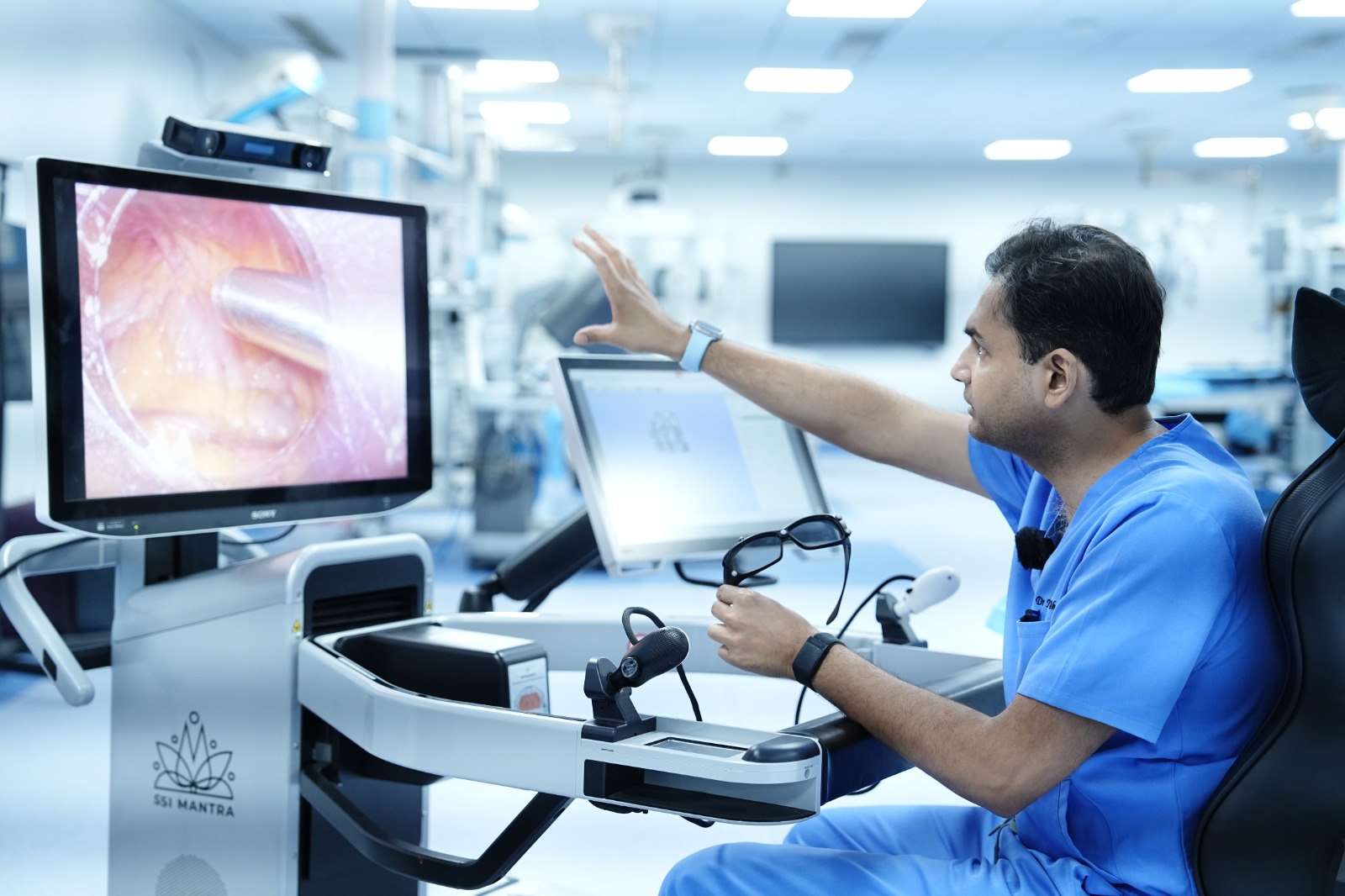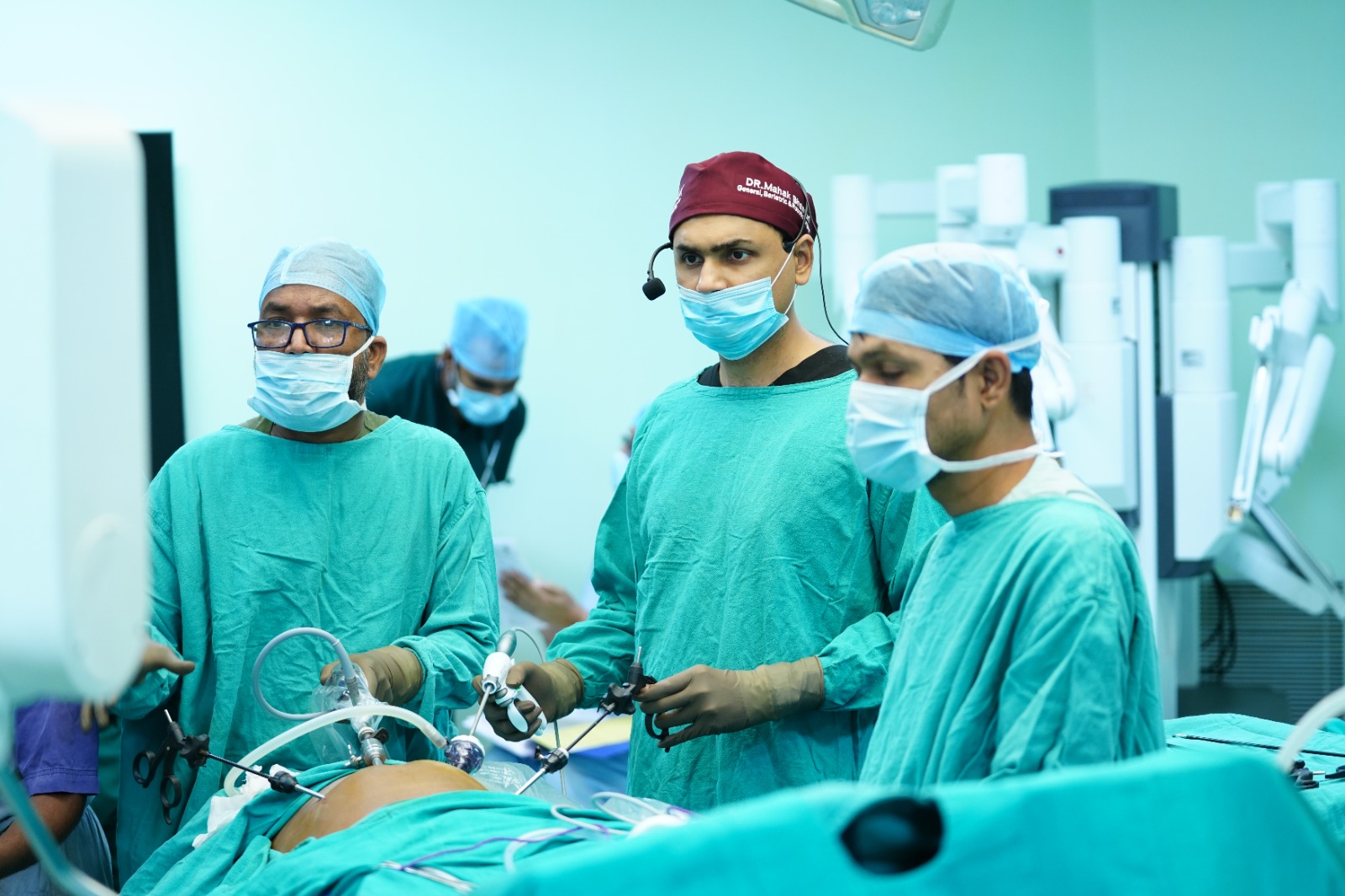
Know your Surgeon
Dr. Mahak Bhandari
MBBS, MS, FMBS, FALSWelcome to the official profile of Dr. Mahak Bhandari, a distinguished surgeon known for his expertise in general surgery, advanced laparoscopic procedures, gastrointestinal surgery, bariatric & metabolic surgery, and robotic surgery. With 11+ years of clinical and surgical experience and 13 years of medical training, Dr. Bhandari has become a trusted name in advanced surgical care across India.
Pioneering Robotic General Surgery
Dr. Bhandari is among the first surgeons to introduce Robotic General Surgery in this region, bringing a new era of precision and minimally invasive care. His expertise covers:
With his commitment to innovation and patient-centric care, Dr. Mahak Bhandari continues to set new standards in modern surgery.
Know More






